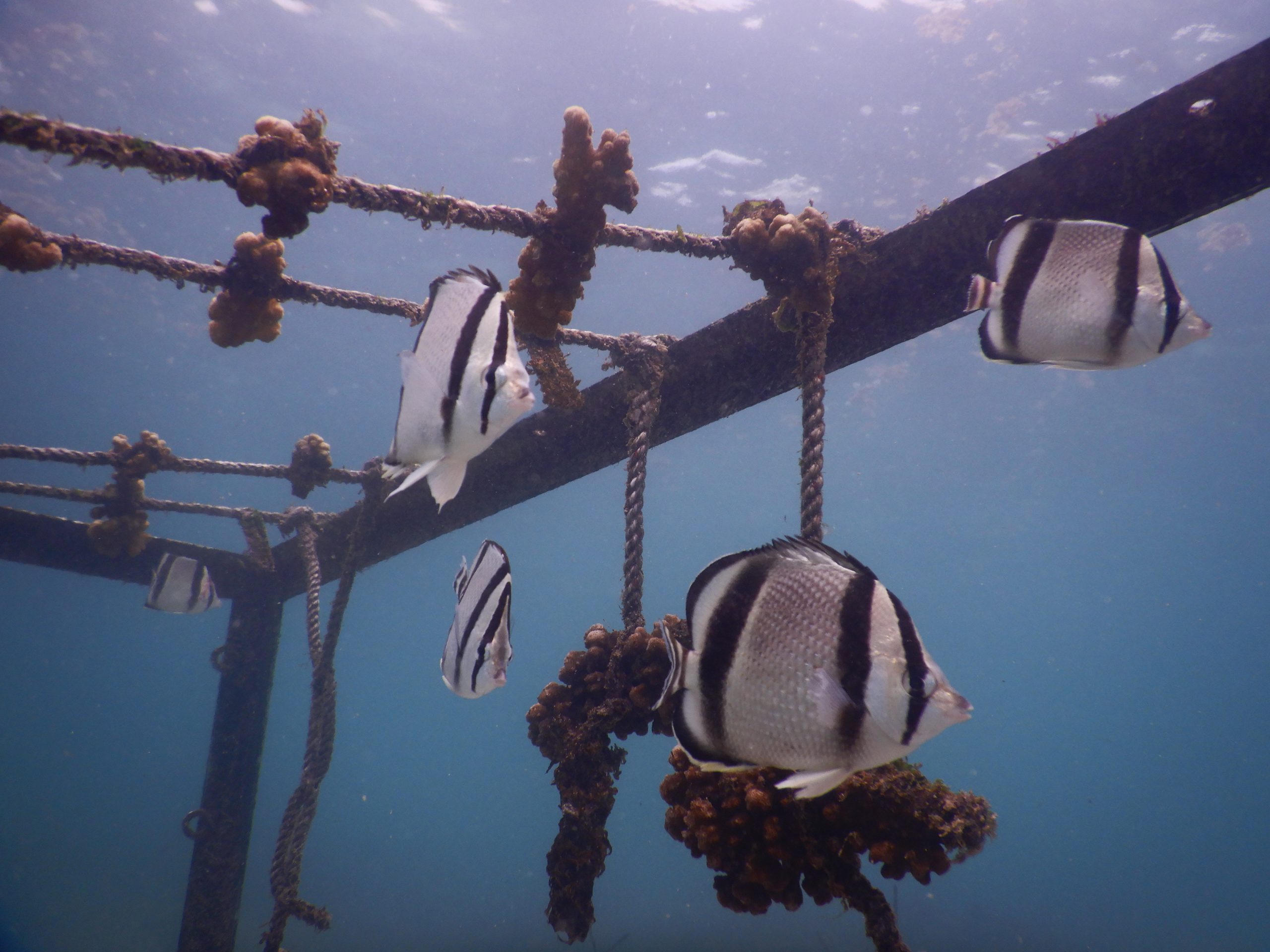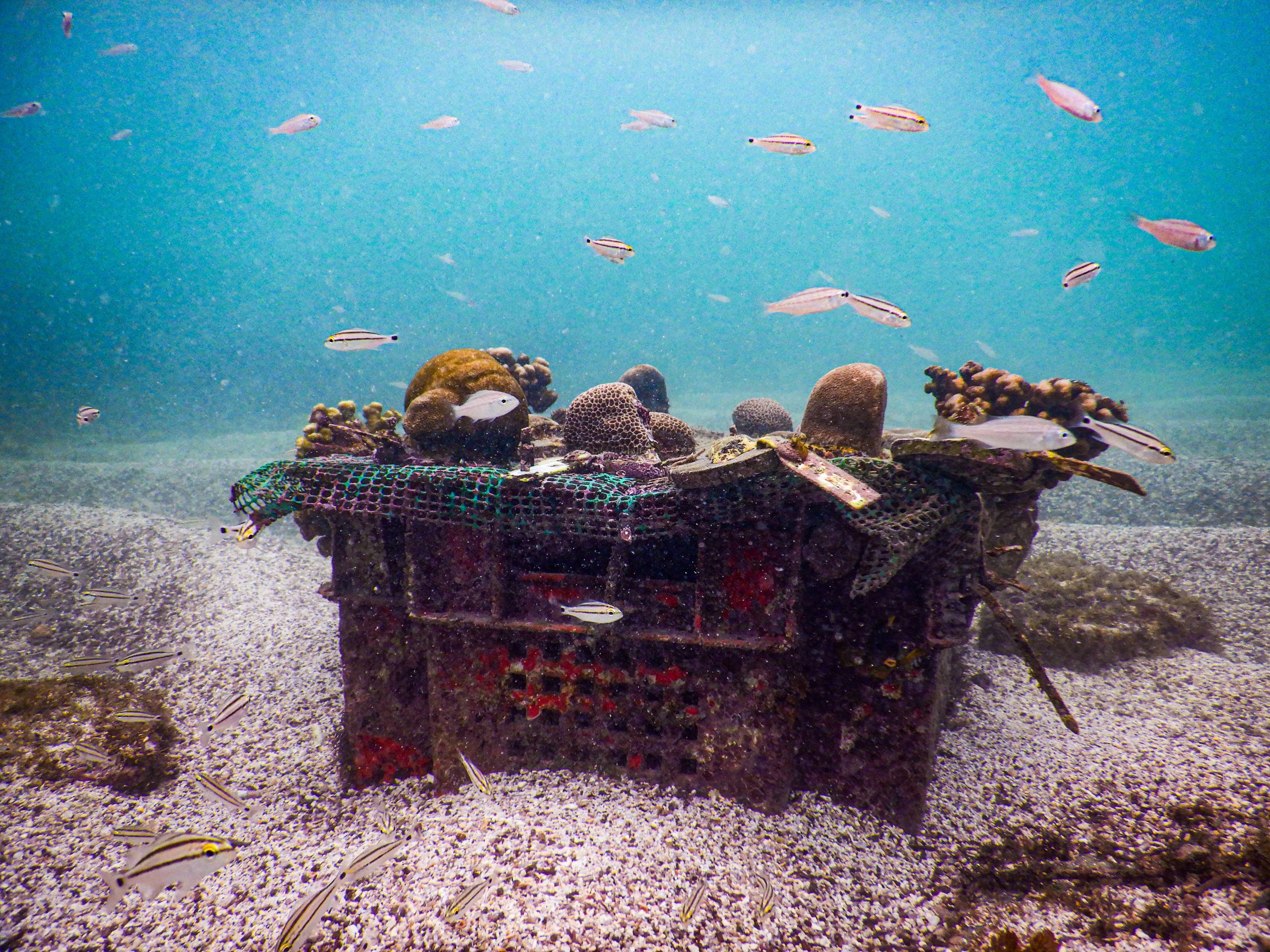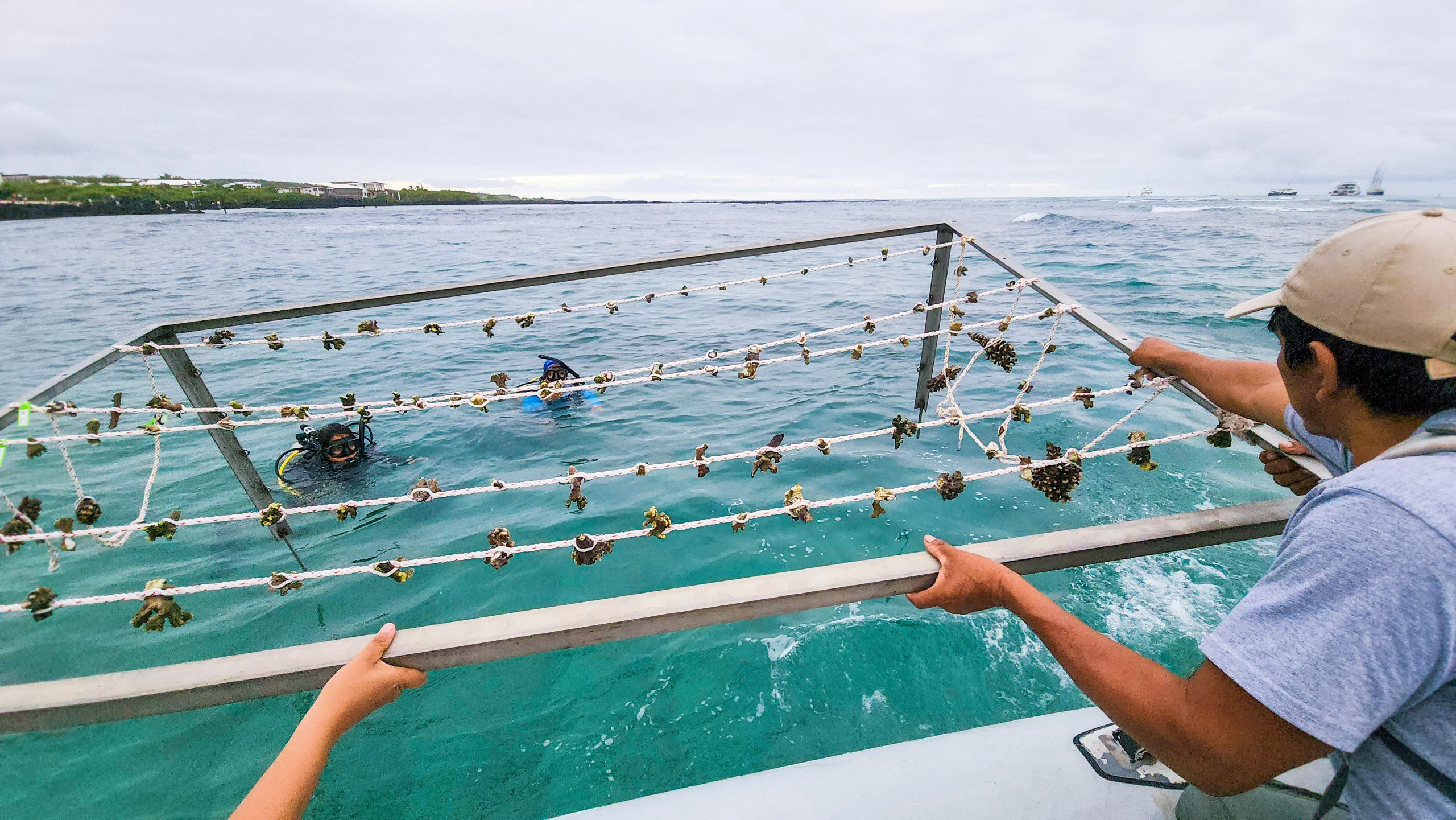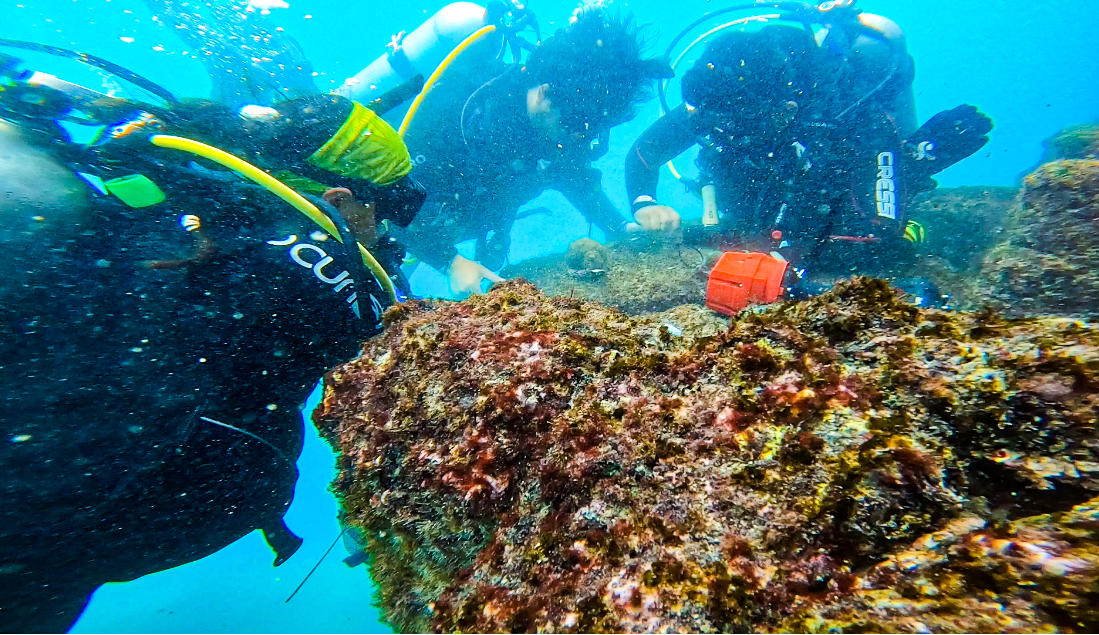Restoring Coral Reefs
Coral reefs provide unique ecosystem services that are important for the species that inhabit them and the people that rely on them. According to the United Nations, the value of these ecosystem services is between $100,000 and $600,000 per square kilometer. We find a high diversity of species using coral reefs for breeding, feeding, and nursing young. Corals filter water, buffer shorelines from erosion, and store carbon. Humans rely on coral reefs for fishing, tourism, and other services.
In the Galápagos Marine Reserve, between 95% and 99% of coral reefs were lost between 1983 and 1985 due to extreme weather conditions caused by El Niño, coral bleaching, and bioerosion due to the high presence of Sea Urchins. Since then, some of the coral reef communities have recovered, but since the habitat conditions that they create are of extreme importance, it is key to know if Galápagos coral reefs can undergo a process of restoration through diverse strategies such as coral farming. Coral farming is a process whereby fragments of corals are collected from local reefs, raised in farms until mature, and then installed at restoration sites. With the support of Galápagos Conservancy, the Galápagos National Park Directorate will take on a pilot project to study and foster conditions for restoring coral reefs in the Galápagos Marine Reserve.
-
Project Location
Punta Estrada, Santa Cruz Island Galápagos Marine Reserve
-
Program Launch
2022
-
Degraded Coral Community
Between 95% and 99% of coral reefs were lost between 1983 and 1985
-
Partner
Galápagos National Park

Why It Matters
- Climate change has affected coral reefs, directly turning them into ecosystems in danger of extinction. The rise of temperature and acidification of the oceans in combination with degrading environmental processes are the main causes of massive coral deaths, with low chances of regeneration.
- In the Galápagos Marine Reserve (GMR), Darwin Island has just one structured coral reef. Even though many coral reefs have been lost in the GMR, there has been some regeneration where coral reefs once thrived.
- Because of the difficulty coral reefs face in regenerating their ecosystems by themselves — due to increasing sea temperatures and human-induced stressors such as pollution and overfishing —it is necessary to implement all the means required to encourage the recovery of coral reef ecosystems in the Galápagos Marine Reserve. We must start with pilot projects to understand and learn how to manage restoration processes and corals’ response to these restorative practices.
- If these practices are successful in Punta Estrada, they can be replicated throughout different coral reef populations in the Archipelago.
Our Impact

Background
The Galápagos Marine Reserve had thriving coral populations before climate change began to affect the oceans. According to scientists, between 1983 and 1985, most coral reef ecosystems in Galápagos were lost. Regeneration of these ecosystems has been recorded, but they are delicate and sometimes impossible for coral reefs to achieve independently. Due to its precarious process, a dedicated team and a meticulous strategy is needed to foment the regeneration of coral ecosystems in the Galápagos Marine Reserve.
Project Goals
This project aims to design and implement a functional nursery for coral planting in Bahia Academia and develop the restoration pilot project in the degraded coral reef community of Punta Estrada on Santa Cruz Island. The project also aims to increase knowledge and awareness in the local community about the importance of coral reefs for marine ecosystems and human beings.


Expected Outcomes
The aim is to create a functional nursery in Bahía Academia to replicate diverse coral communities throughout the Archipelago and to establish a specific area for growing coral reefs before introducing them back into their natural ecosystems. The hope is to strengthen the awareness and knowledge of diverse participants to promote the protection and regeneration of coral reefs in the Galápagos Marine Reserve.
Get Involved
Take Action for Galápagos, Right Now
Our generous community of supporters is the cornerstone of our efforts to preserve this ecological wonder of the world.



More from Galápagos Conservancy
Keep Exploring
Our Efficiency
75%
Direct conservation and grants investments
15%
Fundraising
10%
Management






